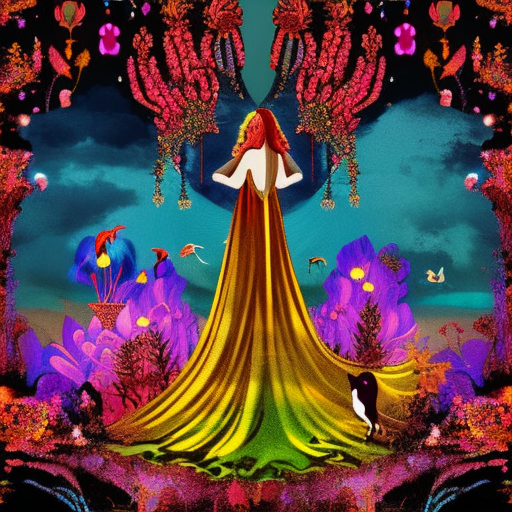The Lady and the Unicorn: A Tale of Love and Art in the Middle Ages
In “The Lady and the Unicorn” by Tracy Chevalier, the lives of several characters intertwine as they become involved in the creation of a set of magnificent tapestries. Set in the late 15th century, the novel explores themes of love, desire, art, and the power dynamics between men and women. Through vivid descriptions and rich historical detail, Chevalier brings to life the world of medieval France and the intricate process of tapestry-making.
The Creation of the Tapestries
The story revolves around the creation of a set of tapestries known as “The Lady and the Unicorn.” Commissioned by Jean Le Viste, a wealthy nobleman, the tapestries are to be hung in his castle. The task of designing and weaving the tapestries falls upon Nicolas des Innocents, a talented artist, and his team of weavers. As the project progresses, tensions arise among the characters, fueled by their personal ambitions, desires, and secrets.
The Enigmatic Lady and the Unicorn
At the center of the tapestries is a mysterious lady, who becomes the object of desire for several characters. Is she a real person or a figment of the artist’s imagination? This question remains unanswered throughout the novel, adding an air of intrigue and mystery. The lady is depicted in various scenes, interacting with a unicorn, a symbol of purity and innocence. The tapestries are imbued with symbolism and allegory, reflecting the complex emotions and desires of the characters involved in their creation.
A Glimpse into Medieval Life
Through her meticulous research, Chevalier provides readers with a detailed glimpse into the daily life of medieval France. From the bustling streets of Paris to the quiet countryside, the novel paints a vivid picture of the sights, sounds, and smells of the era. The author explores the social hierarchy, gender roles, and religious beliefs of the time, shedding light on the challenges and constraints faced by women in particular.
The novel also delves into the world of tapestry-making, revealing the intricate techniques and skills required to create these works of art. Chevalier’s descriptions of the dyeing process, the weaving looms, and the painstaking attention to detail highlight the craftsmanship and dedication of the artisans involved.
Key Takeaways:
- Love and desire can be powerful motivators, driving individuals to great heights or leading to their downfall.
- Art has the ability to capture and convey complex emotions and desires, transcending time and place.
- Gender roles and power dynamics play a significant role in shaping the lives of individuals, particularly women, in historical contexts.
“We are what we make ourselves into.”
– Tracy Chevalier, The Lady and the Unicorn
In “The Lady and the Unicorn,” Tracy Chevalier weaves a captivating tale of love, art, and desire in the Middle Ages. Through her vivid descriptions and well-researched historical backdrop, she brings to life the world of tapestry-making and the complex relationships between the characters. This novel is a testament to the power of art to transcend time and capture the essence of human emotions.












